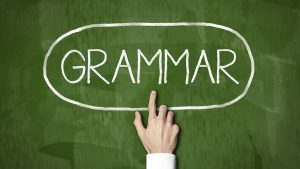Functional Theories of Grammar
Functional theories of grammar are those approaches to the study of language that see functionality of language and its elements to be the key to understanding linguistic processes and structures.
These theories of language propose that since language is fundamentally a tool, it is reasonable to assume that its structures are best analyzed and understood with reference to the functions they carry out.
Functional theories of grammar belong to structural and humanistic linguistics. They take into account the context where linguistic elements are used and study the way they are instrumentally useful or functional in the given environment.
This means that functional theories of grammar tend to pay attention to the way language is actually used in communicative context. The formal relations between linguistic elements are assumed to be functionally-motivated.
Functional grammar broadens its purview beyond these structural phenomena, and hence its theoretical outlook is distinctive. It analyzes grammatical structure, as do formal and structural grammar; but it also analyzes the entire communicative situation: the purpose of the speech event, its participants, its discourse context.
Functionalists maintain that the communicative situation motivates, constrains, explains, or otherwise determines grammatical structure, and that a structural or formal approach is not merely limited to an artificially restricted data base, but is inadequate even as a structural account.

Functional grammar, then, differs from formal and structural grammar in that it purports not to model but to explain; and the explanation is grounded in the communicative situation.
Functional Theories of Grammar
Theories of grammar, grammatical analyses, and grammatical statements may be divided into three types: structural, formal, and functional. Structural
grammar describes ‘such grammatical structures as phonemes, morphemes,
syntactic relations, semantics, interc1ause relations, constituents, dependencies, sentences, and occasionally, as with tagmemics and glossematics, texts and discourses.
Another view on Functional Theories of Grammar
Functional grammar is a linguistic theory that states that all its components – affixes, words, sentences or phrases – carry important semantic, syntactic and pragmatic frameworks in the broader understanding of functionalities and linguistic processes of language. Using these functions, linguists are able to analyze grammar and apply the findings further in pragmatic, semantic, morphosyntactic, and phonological research.

Functional theories of grammar can entail functional linguistics, lexical functional grammar, as well as Role and Reference Grammar (RRG) model. The functional theories of grammar form a concept in words through three steps. First, by building on an interpersonal level, taking into account the context, using the pragmatic component. Second, by clearing every word and phrase of sense at the level of representation, using the semantic component. Third, by applying the morphosyntactic component, level phonological consider the sound of a linguistic utterance.
The contextual component is the portion of the expression that can only be understood in reference to what already shared in the conversation or to a shared knowledge of the environment. For example, in research, all pronouns form a part of the component context because they require knowledge of a precedent. The last component of the functional grammar can be applied in the output component, in which all the other pieces come together as a linguistic expression, whether spoken, written or signed. Trust the experts at Homework Help Canada, get a quote now.

Links
In this link you will find further instructions on Functional Grammar. In this talk, I introduce Halliday’s approach to the study of language. It includes grammar, and a explanation on what he calls ‘systemic’ and ‘functional’ approach.
After reading “ESL Teaching Online”, you can check important issues for ESL teachers on the section PDFs. You can also visit my channel on YouTube.
